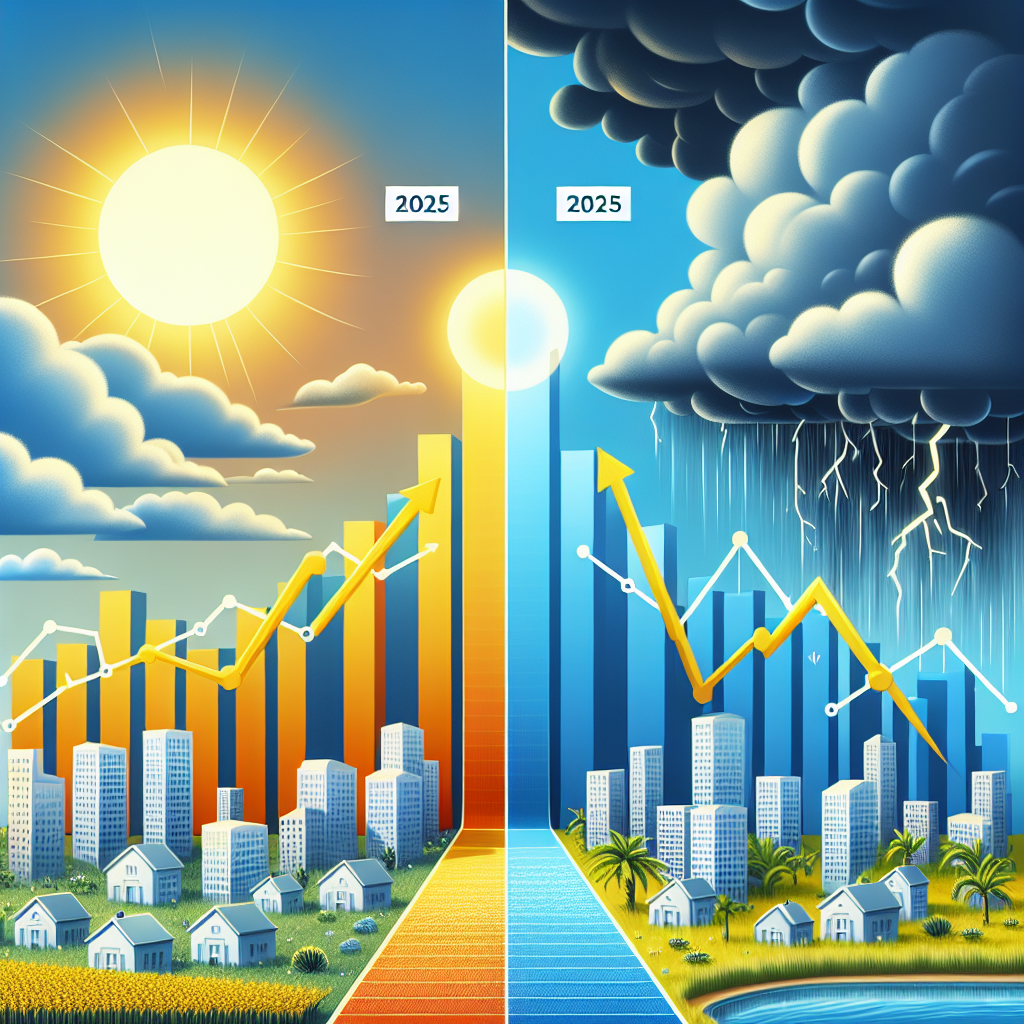Zillow and Fannie Mae Offer Contrasting Forecasts for 2025 Housing Market
The housing market is a complex and ever-evolving landscape, influenced by a myriad of factors ranging from economic conditions to demographic shifts. As we look towards 2025, two major players in the real estate and financial sectors, Zillow and Fannie Mae, have presented contrasting forecasts for the housing market. Understanding these predictions can provide valuable insights for potential homebuyers, investors, and policymakers.
Understanding Zillow’s Optimistic Outlook
Zillow, a leading online real estate marketplace, has painted a relatively optimistic picture for the 2025 housing market. Their forecast is based on several key assumptions and trends that they believe will shape the market in the coming years.
- Continued Demand: Zillow anticipates a sustained demand for housing, driven by millennials entering their prime home-buying years. This demographic shift is expected to bolster the market, as millennials seek to establish roots and invest in homeownership.
- Technological Advancements: The integration of technology in real estate transactions is expected to streamline processes, making buying and selling homes more efficient. Zillow predicts that innovations such as virtual tours and AI-driven property valuations will enhance the overall market experience.
- Urban Revival: Post-pandemic, there is a growing trend of people returning to urban areas. Zillow forecasts that this urban revival will lead to increased demand for city properties, driving up prices in metropolitan areas.
According to Zillow’s projections, these factors will contribute to a steady increase in home prices, with an average annual growth rate of 3-5% through 2025.
Fannie Mae’s Cautious Perspective
In contrast, Fannie Mae, a government-sponsored enterprise that provides financial products and services to increase the availability and affordability of housing, offers a more cautious outlook. Their forecast is shaped by potential economic headwinds and regulatory changes.
- Economic Uncertainty: Fannie Mae highlights the potential for economic volatility, including inflationary pressures and interest rate hikes, which could dampen housing affordability and slow market growth.
- Regulatory Changes: The organization points to possible regulatory shifts aimed at cooling the housing market, such as stricter lending standards and increased taxes on real estate transactions, which could impact buyer sentiment.
- Supply Chain Challenges: Ongoing supply chain disruptions and labor shortages in the construction industry may hinder new housing developments, limiting supply and potentially stabilizing prices.
Fannie Mae’s forecast suggests a more modest growth in home prices, with an annual increase of 1-2% through 2025, as these challenges weigh on the market.
Case Studies and Real-World Examples
To illustrate these contrasting forecasts, consider the case of Austin, Texas, a city that has experienced rapid growth in recent years. Zillow’s optimistic view aligns with Austin’s tech-driven economy and influx of young professionals, suggesting continued price appreciation. Conversely, Fannie Mae’s cautious stance is reflected in the city’s rising cost of living and potential regulatory interventions to address housing affordability.
Similarly, in cities like San Francisco, where housing prices have historically been high, Zillow’s forecast may predict a rebound in demand as remote work trends stabilize. Meanwhile, Fannie Mae’s perspective might emphasize the challenges of affordability and potential policy changes aimed at curbing speculative investments.
Conclusion: Navigating the Future Housing Market
As we approach 2025, the housing market remains a dynamic and multifaceted arena. Zillow and Fannie Mae’s contrasting forecasts highlight the complexity of predicting future trends. While Zillow’s optimism is fueled by demographic shifts and technological advancements, Fannie Mae’s caution is rooted in economic uncertainties and regulatory considerations.
For stakeholders in the housing market, understanding these differing perspectives is crucial. Homebuyers should weigh the potential for price appreciation against affordability challenges, while investors must consider both growth opportunities and risks. Policymakers, too, should balance the need for market stability with the goal of ensuring accessible housing for all.
Ultimately, the 2025 housing market will be shaped by a confluence of factors, and staying informed will be key to navigating its challenges and opportunities.



